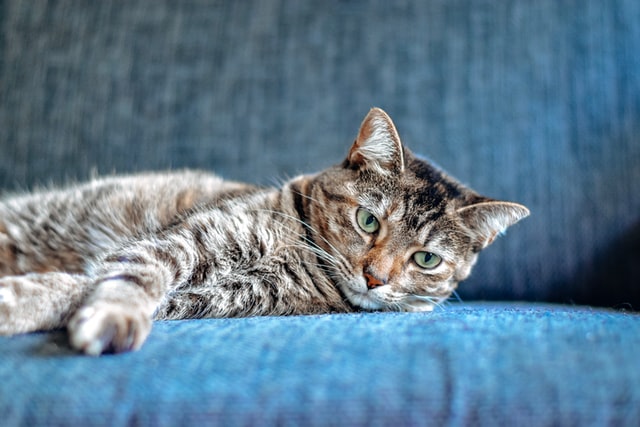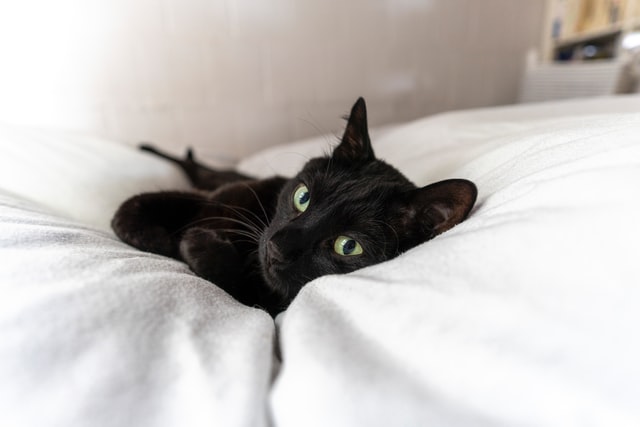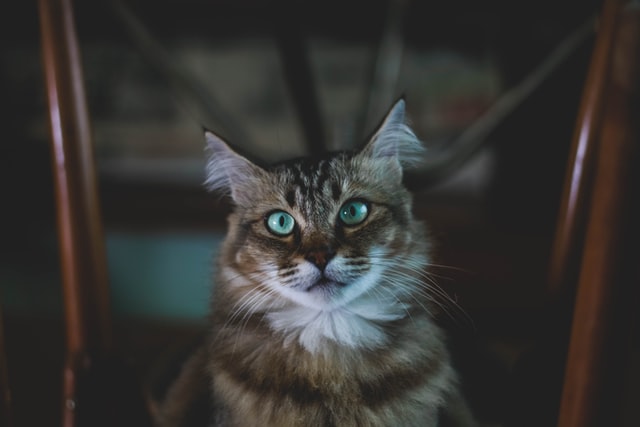Pet Insurance Review > Pet Wellness Guides > Why Sharp Sounds Trigger Seizures in Cats - Pet Insurance Review
Why Sharp Sounds Trigger Seizures in Cats
Posted: 07/01/2022 | BY: Erin Cain | Categories: Cat , Health problems , Pet care
Do you have a cat that seizures when she hears a loud noise? If so, you’re not alone. Scientists have been trying to figure out why sharp sounds trigger seizures in cats for years, and there is still no clear answer. However, they have uncovered some interesting information about the phenomenon. In this article, we will explore the science behind audiogenic epilepsy in cats and discuss how you can help your cat deal with this condition.

What are feline audiogenic reflex seizures (FARS)?
A recently discovered type of epilepsy in cats is called feline audiogenic reflex seizures (FARS). It’s also called the “Tom and Jerry Syndrome,” referring to the famous feline cartoon character Tom, who was frequently startled by loud noises courtesy of Jerry, the mouse. FARS involves sound-induced seizures in cats due to exposure to high-pitched noises. While any cat can develop FARS, it appears most commonly in Birman cats, cats with hearing issues, and older cats.
The sounds of daily life are normal to cat owners. Still, they can trigger an intense physiological response in cats with FARS. These episodes, called reflex seizures, are different from epileptic seizures in cats. In reflex seizures, the event is always precipitated by auditory stimuli. The louder the sound, the more intense the reaction or episode. There are three types of seizures known to occur in cats with FARS.

Types of seizures in cats with FARS
Absence seizure (Petit Mal Seizures in cats)
In absence seizures, cats can lose their sense of surroundings for up to 20 seconds. They may also stare vacantly into space and be unresponsive to your touch or call. Because these seizures are so quick and have such short duration, they can be difficult to notice or identify. The FARS study noted that absence seizures were rarely observed during the scientists’ research.
Generalized tonic-clonic seizures
Generalized tonic-clonic seizures are typical or classic epileptic episodes. A clonic seizure includes a loss of awareness followed by collapse and shaking or paddling of the legs. The cat may chew and chomp, foam or drool at the mouth, and possibly defecate and urinate. The seizure usually only lasts a few minutes; however, the cat may be disoriented for some time afterward.
Myoclonic seizures
According to the study, myoclonic seizures are the most common seizure associated with FARS, with 95% of cats experiencing them. These non-convulsive seizures last for a fraction of a second. Cats may suddenly display involuntary jerks, or muscle spasms called myoclonic twitches (hence the name “Tom and Jerry Syndrome”). Most cats will appear to remain conscious throughout myoclonic seizures. In many cases, myoclonic seizures can happen so quickly that cat owners may miss them altogether.
Regardless of the type of seizure, it’s essential to understand what triggers sound-induced seizures and why.

What triggers seizures in cats?
The easiest way to prevent feline audiogenic reflex seizures in cats is by minimizing high-pitched sounds around the home. While some loud noises are unavoidable, you can take steps to prevent your cat from exposure to certain sounds. Here are the most commonly reported triggers of seizures in cats:
- tapping or chinking glass
- jingling car keys
- crinkling tin foil
- crinkling paper or plastic bags
- hammering a nail
- a metal spoon clanging on a ceramic feeding bowl
- typing on a computer keyboard or clicking a computer mouse
- sharp squeaky shoes
- loud digital alarms
- the clicking of an owner’s tongue
- bare feet walking across a wooden floor
If you have a cat who reacts strongly to these certain sounds, do what you can to limit the sounds as much as possible.

What are the risk factors for FARS?
Feline audiogenic reflex seizures affect a particular group of cats, making it easier to determine whether your cat will ever have a FARS-related episode. If you have a kitty that falls into any of the following categories, they may be a candidate for developing FARS:
- Cats with hearing impairment: One theory is that cats with hearing impairments are more sensitive to high-pitched noises, putting them at higher risk for FARS seizures. The research study noted that half the cats studied had a hearing impairment.
- Older cats: According to research, FARS primarily affects senior cats, specifically those who are 10 years or older, with an average onset at age 15. FARS is often paired with concurrent diseases that older cats suffer from due to their geriatric nature. It rarely occurs in kittens and adolescent felines.
- Birman breed: The Birman cat breed is prized for its beautiful looks and even more beautiful and gentle demeanor. Unfortunately, this breed is prone to developing FARS, and researchers are still working to determine why.
FARS can occur in pedigree and non pedigree cats. Currently, animal scientists and veterinary neurologists are searching for a genetic basis for FARS and discovering more treatment methods for this condition. Thankfully, this condition is not life-threatening, but more of a quality of life issue for affected cats.

What treatments are available for cats with FARS?
If your cat has FARS, the veterinarian may give your cat an oral medicine called phenobarbitone. It’s the most approved method for treating FARS seizures in cats, so vets often prescribe it first. However, research has proven that phenobarbitone does not work for all cats with FARS.
An increasingly popular drug option is levetiracetam, which has fewer side effects and can cut the number of myoclonic seizures a cat suffers in half. Additionally, levetiracetam improved the cat’s overall quality of life.
Aside from medical treatments, cat owners can incorporate a quieter environment in the home or at least try to avoid those certain sounds that induce seizures in their cats.
Tackle FARS with a cat health insurance plan.
While most cats will never endure feline audiogenic reflex seizures or Tom and Jerry syndrome, some certainly will. If your cat is one of those unlucky felines who overreact to certain high-pitched sounds, don’t despair. A cat health insurance plan will give your kitty access to top medical treatments and reimburse you up to 90% of the vet bill costs.
Don’t wait for an emergency to happen to your cat. Get a free pet insurance quote from Pet Insurance Review, and protect your kitty today.
References:
- Saahil. (2012). History of Tom & Jerry. Retrieved from http://historyinworld.blogspot.com/2012/03/history-of-tom-jerry.html
- Lowrie, M., et al. (2016). Audiogenic reflex seizures in cats. Retrieved from https://www.ncbi.nlm.nih.gov/pmc/articles/PMC4819795/
- Brown, J. (2022). Birman: Cat Breed Profile, Characteristics & Care. Retrieved from https://www.thesprucepets.com/birman-cat-breed-profile-characteristics-and-care-5220182
- Lewis, T. (2015). Tinkling Spoons Can Trigger Seizures in Cats. Retrieved from https://www.livescience.com/50636-cat-sound-seizures.html
- Brooks, W. (2021). Phenobarbital. Retrieved from https://veterinarypartner.vin.com/default.aspx?pid=19239&id=4951404
- Guthrie, A. (2016). Keppra shows promise for treatment of feline epileptic syndrome. Retrieved from https://www.vetsurgeon.org/news/b/veterinary-news/posts/139778
The information contained on this blog is intended for informational and educational purposes only and should not be construed as medical advice. It is not a substitute for professional veterinary care. Always consult with your veterinarian before making any changes to your pet's health care or treatment plan.
The authors of this blog are not veterinarians and do not claim to be experts in pet health. The information provided here is based on our own experiences and research, as well as information from reputable sources. However, we cannot guarantee the accuracy or completeness of this information.
We encourage you to do your own research and consult with your veterinarian before making any decisions about your pet's health.